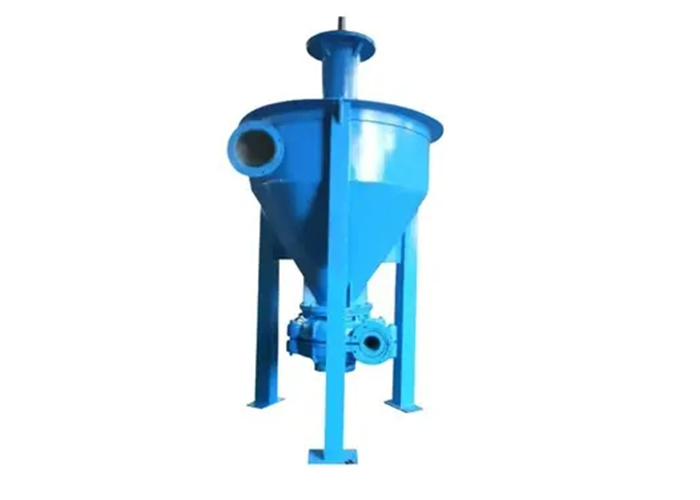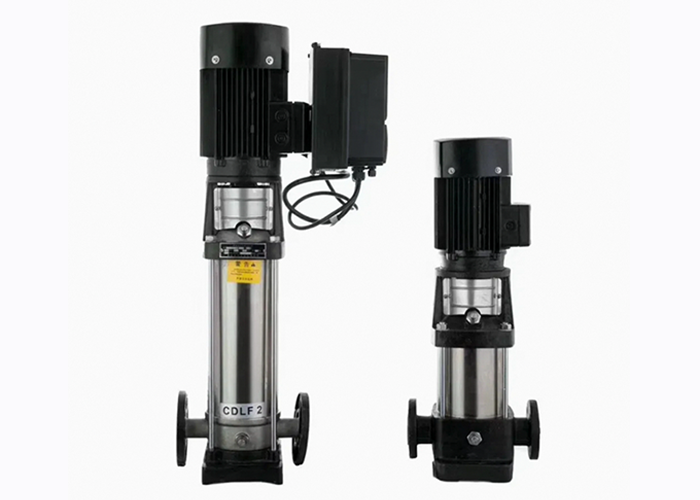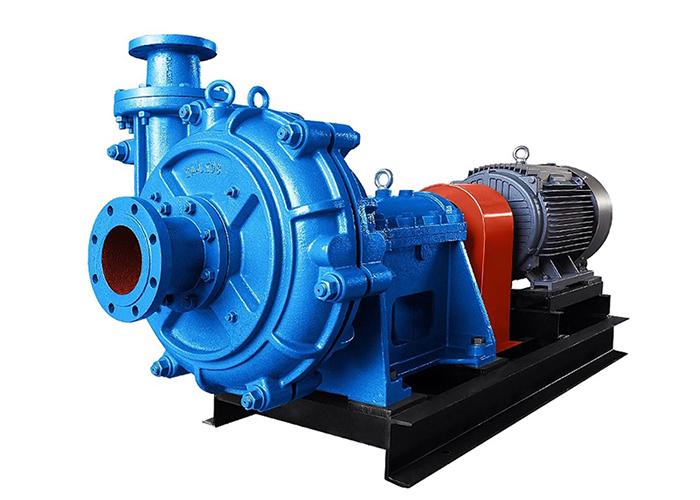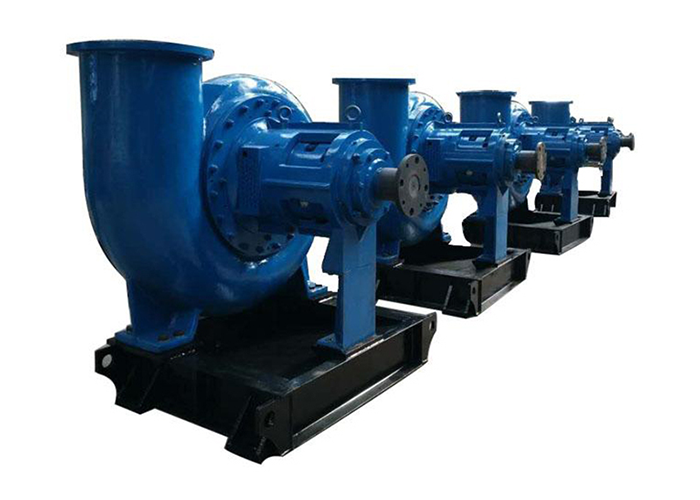Online
Principles and steps of pump selection
2024-09-26
At present, in various fields of the national economy, due to unreasonable selection, many pumps are in unreasonable operating conditions, with low operating efficiency and a lot of energy wasted. Some pumps cannot be used at all due to unreasonable selection, or the maintenance cost is increased and the economic benefit is low. It can be seen that reasonable pump selection is also of great significance to energy conservation.
The so-called reasonable pump selection is to comprehensively consider the comprehensive technical and economic indicators such as the investment and operating costs of the pump unit and the pump station, so as to make it conform to the principles of economy, safety and applicability. Specifically, there are the following aspects: Meet the requirements of flow rate and head, that is, the operating point of the pump (the intersection of the device characteristic curve and the pump performance curve) is required to be kept in the interval operation, which saves power and is not easy to damage the parts.
The selected pump should be small in size, light in weight, cheap in cost, and have good characteristics and high efficiency.
It has good anti-cavitation performance, which can reduce the construction strength of the pump platform and prevent the pump body from cavitation, and it can run smoothly and have a long life.
According to the selected pump, the pump station is built with low project investment and low operating costs. Selection steps 1. List basic data:
1. Medium characteristics: medium name, specific gravity, viscosity, corrosiveness, toxicity, etc.
2. Particle diameter and content of solids contained in the medium.
3. Medium temperature: (℃)
4. Required flow rate
Generally, industrial pumps can ignore the leakage in the pipeline system during the process flow, but consider the impact of process changes on the flow rate. If agricultural pumps use open channels to transport water, leakage and evaporation must also be considered.
5. Pressure: suction tank pressure, drainage tank pressure, pressure drop in the pipeline system (lift loss).
6. Pipeline system data (pipe diameter, length, type and number of pipeline accessories, geometric elevation from suction tank to pressure tank, etc.). If necessary, a device characteristic curve should also be made.
When designing and arranging pipelines, the following matters should be noted:
A. Reasonable selection of pipeline diameter. A large pipeline diameter means a small liquid flow velocity and small resistance loss at the same flow rate, but the price is high. A small pipeline diameter will lead to a sharp increase in resistance loss, increase the head of the selected pump, increase the power, and increase the cost and operating expenses. Therefore, comprehensive consideration should be given from the technical and economic perspectives.
B. The discharge pipe and its pipe joints should consider the pressure they can withstand.
C. The pipeline layout should be arranged as straight pipes as much as possible, and the accessories in the pipeline and the length of the pipeline should be minimized as much as possible. When turning, the bending radius of the elbow should be 3 to 5 times the diameter of the pipeline, and the angle should be as large as possible.
D. Valves (ball valves or stop valves, etc.) and check valves are installed on the discharge side of the pump. The valve is used to adjust the operating point of the pump. The check valve can prevent the pump from reversing when the liquid flows back and prevent the pump from being hit by water hammer. (When the liquid flows back, it will generate huge reverse pressure, causing the pump to be damaged) Determine the flow rate and head
II. Determine the flow rate
a. If the normal flow rate is given in the production process, it should be considered according to the flow rate.
b. If only the normal flow rate is given in the production process, the remaining margin should be considered. For large flow and low head pumps with ns>100, the flow margin is taken, for small flow and high head pumps with ns<50, the flow margin is 10%, and for pumps with 50≤ns≤100, the flow margin is also 5%. For pumps with poor quality and poor operating conditions, the flow margin should be 10%.
c. If the basic data only gives the weight flow rate, it should be converted into volume flow rate.Although most pumps are always determined according to different use environments, customers have increasing requirements for the service life and efficiency of products. Our engineers are experts with rich experience in design, material selection, and monitoring systems. In addition to developing new designs, we often exchange experiences with users, continuously improve our existing technical level, and provide design solutions for customers' projects.
Many customers have benefited from the correct choices made by Shanghai Gaoji Pump Manufacturing Co., Ltd. Our wide range of products and strong engineering and technical strength enable us to provide economical water pumps, ensuring that you can use our products without any worries.
Related Blogs

Selection, installation and use of slurry pump
The following aspects should be paid special attention to when selecting, installing and using slurry pumps:

The problem of axial force of multistage centrifugal pump

Desulfurization pump is a kind of pump with a very wide range of applications.
Desulfurization pump is a kind of pump that can adapt to various working conditions, such as conveying acid, alkaline liquid or slurry; various corrosive slurries in the smelting industry; various dilute acids in the sulfuric acid industry; various sewage in the environmental protection industry, etc. This pump is both corrosion-resistant and wear-resistant, and has a wide range of uses. It has the following characteristics:

What are the common causes and solutions for slurry pump failures?
As a professional slurry pump manufacturer, we remind you: before starting, you should open the pump inlet valve and close the pump outlet valve. Then start the pump, and then slowly open the pump outlet valve after the pump starts. The size and speed of the pump outlet valve opening should be controlled by the pump not vibrating and the motor not exceeding the rated current.

Selection, installation and use of slurry pump
The following aspects should be paid special attention to when selecting, installing and using slurry pumps:

The problem of axial force of multistage centrifugal pump

Desulfurization pump is a kind of pump with a very wide range of applications.
Desulfurization pump is a kind of pump that can adapt to various working conditions, such as conveying acid, alkaline liquid or slurry; various corrosive slurries in the smelting industry; various dilute acids in the sulfuric acid industry; various sewage in the environmental protection industry, etc. This pump is both corrosion-resistant and wear-resistant, and has a wide range of uses. It has the following characteristics:

What are the common causes and solutions for slurry pump failures?
As a professional slurry pump manufacturer, we remind you: before starting, you should open the pump inlet valve and close the pump outlet valve. Then start the pump, and then slowly open the pump outlet valve after the pump starts. The size and speed of the pump outlet valve opening should be controlled by the pump not vibrating and the motor not exceeding the rated current.
Contact Us



